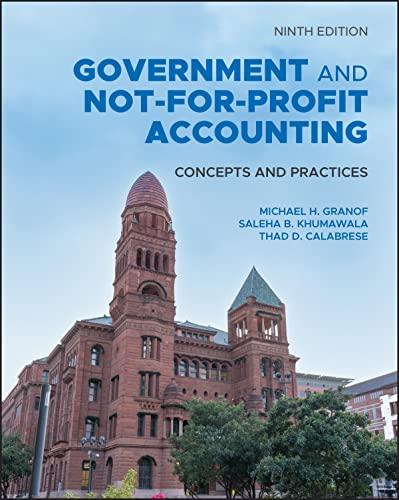The financial statements of the Department of Veterans Affairs (VA) contained the following excerpt from a note
Question:
The financial statements of the Department of Veterans Affairs (VA) contained the following excerpt from a note entitled "Veteran Benefits":
Certain Veterans, who die or are disabled from military service-related causes as well as their dependents, receive compensation benefits. Also, Veterans are provided with burial flags, headstones/markers, and grave liners for burial in a VA national cemetery or are provided a burial flag, headstone/ marker and a plot allowance for burial in a private cemetery. These benefits are provided under Title 38, Part 2, Chapter 23 in recognition of a Veteran's military service and are recorded as a liability on the balance sheet in the period the requirements are met. The note also indicates that the actuarial value of these benefits as of year-end was $1.975 trillion. In addition, the VA offers medical benefits to veterans. These are provided through VA hospitals but only to the extent that required facilities are available ( except for veterans with service-connected disabilities, who are automatically entitled to medical services).
The government makes no guarantees as to level of care, and Congress decides annually how adequately the facilities will be funded.
Although this chapter did not address veterans' benefits, it did raise the related question of whether the government should report a liability for the actuarial value of anticipated Social Security benefits and correspondingly recognize an expense for the benefits as they are "earned" by the beneficiaries.
Suppose that you are the auditor of the VA. Do you think that the VA should recognize a liability (and a corresponding expense) for each of the following benefits during the years in which the veterans perform their military service (or are injured or die)? Or alternatively, do you think that the liability (and related expense) for the benefits should be recognized only when the payments are actually due or the medical services are actually provided?
1. Payments to be made to veterans or their families as a consequence of disability or death from serviceconnected causes.
2. Pension benefits attributable to non-service connected causes. (The actual amount of the benefits is tied mainly to need, rather than to length of service, compensation, or rank. These benefits are in addition to the traditional pension benefits available to career military personnel.)
3. Medical benefits to be provided at VA facilities. (The VA makes no promises to veterans as to the availability or level of care. Congress decides annually on the level of funding.)
Be sure to present your response in the context of FASAB established principles as discussed in the text.
Step by Step Answer:

Government And Not For Profit Accounting Concepts And Practices
ISBN: 9781119803898
9th Edition
Authors: Michael H. Granof, Saleha B. Khumawala, Thad D. Calabrese





